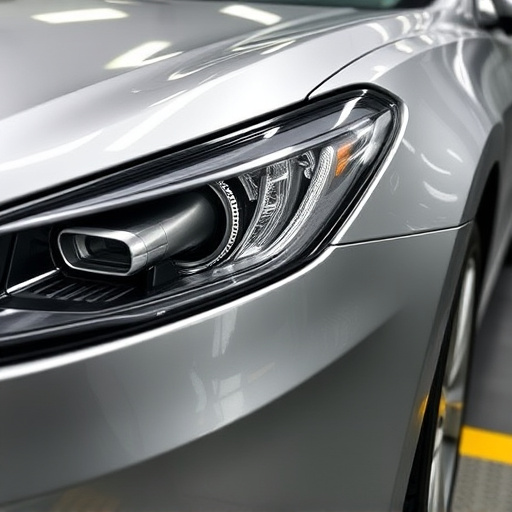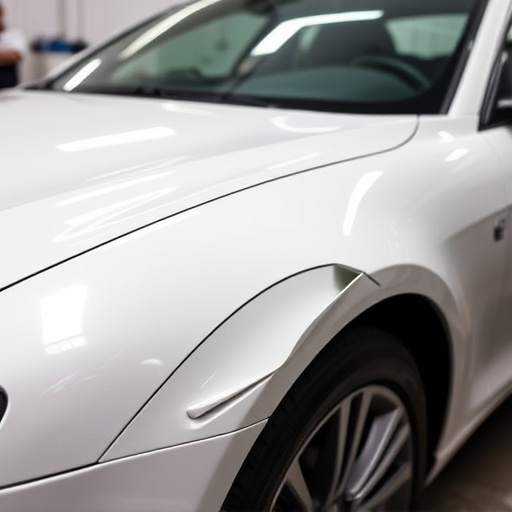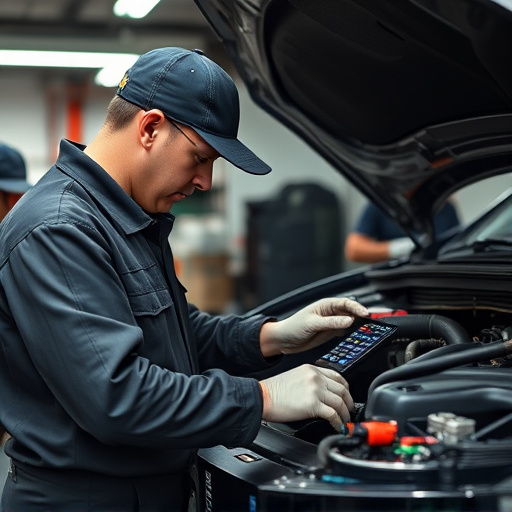Plastic body part repair revolutionizes vehicle maintenance with eco-friendly methods, using biodegradable materials and water-based processes to reduce carbon footprint. This approach integrates natural fibers and plant-based polymers, minimizing environmental impact while ensuring structural integrity. Inspired by nature's healing, advanced 3D printing and bio-compatible materials from renewable sources further enhance sustainability in both auto glass replacement and body part repair.
In today’s eco-conscious world, exploring sustainable solutions in medical fields is paramount. This article delves into the innovative concept of plastic body part repair through an eco-friendly lens. We explore the traditional practices and their environmental impact, followed by a deep dive into sustainable materials and cutting-edge techniques that offer a greener approach to plastic surgery. By harnessing nature’s resources, these methods promise a revolutionary change in how we restore and heal our bodies.
- Understanding Plastic Body Part Repair: The Eco-Friendly Perspective
- Sustainable Materials: Alternatives for Body Part Repairs
- Innovative Techniques: Revolutionizing Plastic Surgery with Nature's Touch
Understanding Plastic Body Part Repair: The Eco-Friendly Perspective

Plastic body part repair is a specialized process that focuses on restoring and rejuvenating damaged or degraded plastic components within vehicles or other structures. Unlike traditional automotive body work that often relies heavily on toxic chemicals and non-sustainable practices, eco-friendly approaches prioritize environmental safety and minimal waste generation. By adopting innovative techniques and materials, this modern approach to vehicle body repair not only conserves resources but also minimizes the release of harmful substances into the ecosystem.
From a green perspective, plastic body part repair involves using biodegradable or recycled materials, implementing water-based cleaning and painting processes, and employing advanced technologies to mend and reinforce plastic surfaces without compromising structural integrity. These practices significantly reduce the carbon footprint associated with auto maintenance and contribute to a circular economy where resources are reused and recycled effectively.
Sustainable Materials: Alternatives for Body Part Repairs

The traditional methods of plastic body part repair often rely heavily on non-biodegradable materials and chemicals, raising significant environmental concerns. To address this issue, the automotive industry is increasingly exploring sustainable alternatives for vehicle restoration and car collision repair. One of the primary focuses is on developing eco-friendly materials that can replace conventional plastics in car body restoration processes.
Natural fibers like bamboo, hemp, and recycled textiles are being incorporated into composite materials, offering a greener solution for plastic body part repairs. These renewable resources not only reduce the carbon footprint but also provide excellent strength-to-weight ratios, making them viable options for both structural and non-structural car collision repair applications. Additionally, bio-resins and plant-based polymers are gaining traction as safer and more sustainable adhesives and coatings, further enhancing the eco-credentials of vehicle restoration processes.
Innovative Techniques: Revolutionizing Plastic Surgery with Nature's Touch

The field of plastic body part repair is witnessing a remarkable transformation with the integration of eco-friendly techniques, bringing a fresh perspective to traditional surgical practices. These innovative methods draw inspiration from nature’s intricate designs, offering sustainable alternatives for collision repair and restoration. By emulating natural healing processes, surgeons can now enhance their capabilities in reconstructing and repairing various body parts, ensuring minimal environmental impact.
One such approach involves the use of bio-compatible materials derived from renewable resources, mimicking the human body’s own response to injury. This green strategy not only reduces the need for synthetic, non-biodegradable implants but also facilitates faster recovery. Moreover, advanced techniques like 3D printing with biodegradable polymers enable precise customization, reducing waste typically associated with conventional automotive body shop practices. Even auto glass replacement can be undertaken using eco-friendly solutions, ensuring a comprehensive and environmentally conscious plastic body part repair process.
The future of plastic body part repair looks promising, with an increasing focus on eco-friendly approaches. By embracing sustainable materials and innovative techniques inspired by nature, we can revolutionize plastic surgery while minimizing environmental impact. These advancements not only contribute to a greener planet but also offer patients safer, more biocompatible options for their repairs. As we continue to explore these eco-conscious solutions, the field of plastic body part repair is set to undergo a transformative journey, ensuring better outcomes and a lighter footprint on our natural world.














